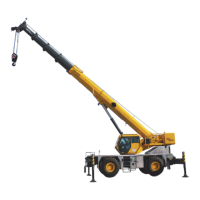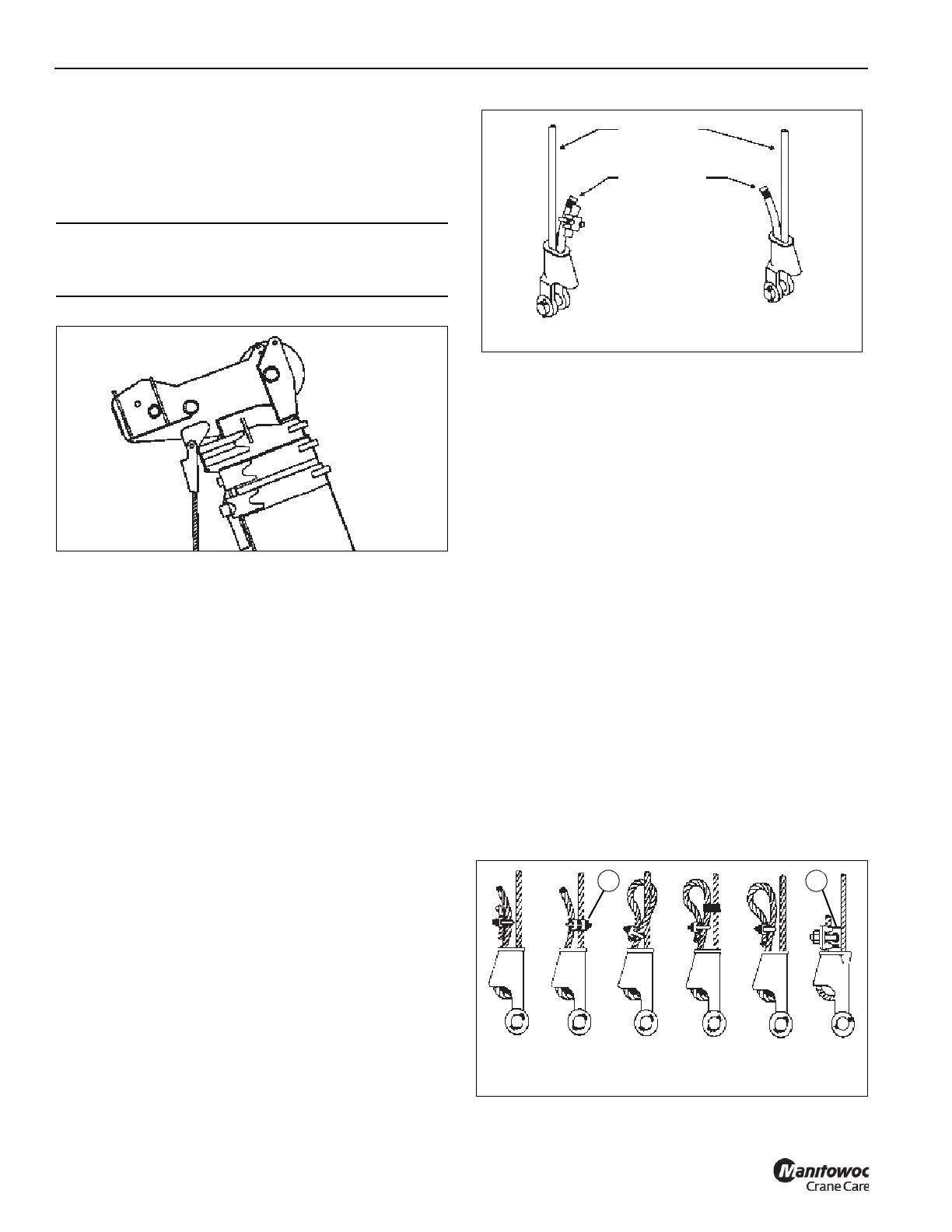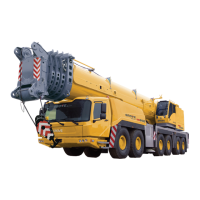5-10 Published 3-23-2020, Control # 654-04
SET-UP AND INSTALLATION GRT655/655L OPERATOR MANUAL
replacement of wire ropes they produce. Their advice should
be sought for each specific type of wire rope a crane user
intends to install on a mobile crane.
When assembly is complete, raise boom to a working
position with a load suspended to firmly seat wedge and rope
in socket before crane is used operationally.
When anchoring socket to the boom, make sure flat face of
socket is toward boom sections as shown in Figure 5-12.
INSTALLING WEDGE AND SOCKET
1. Inspect wedge and socket. Remove rough edges and
burrs.
2. Seize wire rope end using soft or annealed wire or
strand. If end of rope is welded, welded end should be
cut off unless otherwise stated by the rope manufacturer.
This allows distortion of the rope strands, caused by the
bend around the wedge, to adjust themselves at the end
of the line.
3. Make sure live end side (Figure 5-13) of rope is directly
in line with ears of socket and direction of pull to which
the rope will be subjected. If rope is loaded into socket
incorrectly, under a load the rope will bend as it leaves
the socket. The edge of the socket will wear into the rope
causing damage and eventual failure.
4. Insert wire rope end in socket, form a loop in the rope,
and route rope back through socket allowing the “dead”
end to protrude from the socket. Make sure dead end of
the rope is long enough to apply end treatment after
wedge is seated.
5. Insert wedge in loop. Pull live end of rope until wedge
and rope are snug inside socket. It is recommended
wedge be seated inside socket to properly secure the
wire rope using the crane’s hoist to first apply a light load
to the live line.
6. After final pin connections are made, increase loads
gradually until wedge is properly seated.
7. Wire rope and wedge must be properly secured inside
socket before placing crane into lifting service. It is the
wedge that secures the wire rope inside the socket. The
dead-end treatment is used to keep wedge from
becoming dislodged from socket should the rope
suddenly become unloaded from the overhaul ball or
hook block striking the ground, etc.
Figure 5-14 shows methods for securing dead-ends of wire
ropes in a wedge socket assembly. While the loop-back
method (C, D, E) is acceptable, take care to prevent the loop
becoming entangled with tree branches and other
components during crane transport, or the anti two-block
system and other components during crane operation.
CAUTION
If socket is not positioned with flat face toward boom
sections, structural damage will occur.
Incorrect
Correct
Dead End
Live End
5337
FIGURE 5-13

